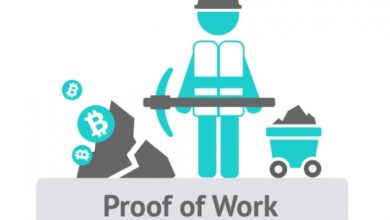
Blockchain-based smart contract platforms have taken the cryptocurrency market by storm during the last two years.
The proof of that claim is the view at top 15 cryptocurrencies on coinmarketcap.com, which shows us that five cryptocurrencies native to the smart contract platforms’ blockchains are a part of that elite company.
That being said, we think that it is essential for our readers to have a better understanding of those top projects which had thrived most by offering smart contract features to their users.
What are Smart Contracts?
In short, smart contracts are automated, self-executing deals with specific instructions written on its code. Every action written in the smart contract gets executed only when certain conditions are reached.
As such, smart contracts have a wide variety of use cases, which is best reflected in Ethereum (ETH), whose blockchain is supporting a large number of different projects.
However, Ethereum is not a sole bringer of that technology, and in this article, we are going to explain more about:
- Ethereum
- EOS
- Stellar
- Cardano
- NEO
Ethereum (ETH)
By far the most popular smart contract platform, Ethereum, was the first to offer such technology.
To work on or use the Ethereum blockchain, one has to afford gas, which is needed to conduct any kind of transaction on the network. By paying for gas, user rewards miners who secure the network in Ethereum’s Proof-of-Work (PoW) system.
Contrary to some recent revelations, which show that it can be otherwise, gas on the Ethereum blockchain is still paid for with network’s native cryptocurrency, Ether.
As it was mostly used for the issuance of ICO tokens, and some Dapp development, many tokens still reside on the Ethereum platform, which can cause network congestion due to, recently popular, scalability issues of the Ethereum ecosystem.
“Ethereum is a decentralized platform that runs smart contracts: applications that run exactly as programmed without any possibility of downtime, censorship, fraud or third-party interference. These apps run on a custom built blockchain, an enormously powerful shared global infrastructure that can move value around and represent the ownership of property,” the Ethereum Foundation defined its product.
Ethereum can be described as the world computer which can have many use cases.
EOS (EOS)
Since announced, EOS was proclaimed to be the Ethereum killer.
It offers the same functions, with some notable differences.
Unlike its pioneering counterpart, EOS is based on the Delegated Proof-of-Stake consensus reaching mechanism. That means that there aren’t any miners involved in the block verification process, but rather a number of the network’s representatives who ensure the stability of the system.
That core difference enables EOS to be theoretically more scalable than Ethereum, and conduct more transactions per second (TPS).
Block.one, the main development team behind EOS, claims that they are aiming for a million TPS, which will, moreover, be fee-less.
That way, EOS would be more convenient for enterprises to use, and more capable of supporting large-scale operations on its blockchain through Dapps.
However, EOS is still a young project which still has to prove its claims.
Stellar (XLM)
According to their official website, “Stellar is a platform that connects banks, payments systems, and people. Integrate to move money quickly, reliably, and at almost no cost.”
That claim best depicts the aim of Stellar platform – fast and cheap transactions usable even for micropayments.
Sounds familiar?
Of course, because initially, Stellar was based on the Ripple protocol, which was changed little-by-little through the open-source development policy which led to the launch of Stellar Smart Contracts (SSC).
SSC are expressed as compositions of transactions that are connected and executed using various predetermined constraints.
Although somewhat similar to Ethereum’s smart contracts, SSCs find their best use case within financial institutions.
Furthermore, the Stellar network relies on a Byzantine agreement system instead of PoW or PoS, which is said to bring a decentralized control, low latency, flexible trust, and asymptotic security to the system.
Cardano (ADA)
Even though it is not fully functional yet, Cardano is one of the most promising projects in the blockchain industry.
Yes, Cardano is a smart contract platform, but it is also the one which promises to offer much more.
First of all, the main difference between Cardano and other blockchain platforms is the very approach to the development – it is being built according to peer-reviewed scientific research.
The father of Cardano, Charles Hoskinson, who was also a co-founder of Ethereum, claims that, unlike Ethereum which is a second generation blockchain, Cardano will bring the third generation of the technology to life.
High scalability, interoperability, safety, and regulatory compliance are built into the core of the system.
Cardano’s Ouroboros Proof-of-Stake consensus reaching mechanism ensures that anybody holding ADA cryptocurrency can be the one to verify the block, which enhanced the network’s level of decentralization.
Cardano is built in layers, and upon the completion of its settlement layer (CSL), with cryptocurrency ADA at its center, the smart contracts operating Cardano Computation Layer (CCL) is going to see the light of day.
Sidechain capability will make Cardano interoperable with other ecosystems, among which is the traditional financial system. That feature alone can make Cardano the leading competitor in the industry as none of the smart contract platforms developed to date can interact with the technological environment.
NEO
The Chinese Ethereum, as some like to call NEO, was a hyped up project since it was announced as the AntShares.
NEO offers all the smart contract features as Ethereum and is already being used to launch more than a few crowdfunding campaigns (ICOs).
NEO, as Cardano, also doesn’t use Proof-of-Work to reach a consensus. It has a Proof-of-Stake mechanism, and, unlike Ethereum, Cardano, EOS, or Stellar, NEO blockchain hosts two different digital currencies.
NEO, which is used for the development on the blockchain. And GAS, which is the exclusive means of payment for transactions happening on the NEO blockchain.
Staking nodes receive their rewards for securing the network in GAS.
With the implementation of its 3.0 upgrade, NEO will have to be considered as a serious competitor.
The Race is Still Undecided
Ethereum is still the most used, and accepted smart contract platform, which is understandable as it was also the first to hit the market.
Nevertheless, others are quickly catching up with fresh ideas and countless innovations.
With the kinds of issues Ethereum has to deal with lately, it is possible that the semi-monopoly they held will start to disperse.
The race is on, and it will be a tough one to win.




Thanks for helping out, good information. «Courage comes and goes. Hold on for the next supply.» by Vicki Baum.
I’m not sure the place you are getting your info, but great topic. I must spend a while studying more or figuring out more. Thanks for wonderful information I used to be on the lookout for this information for my mission.